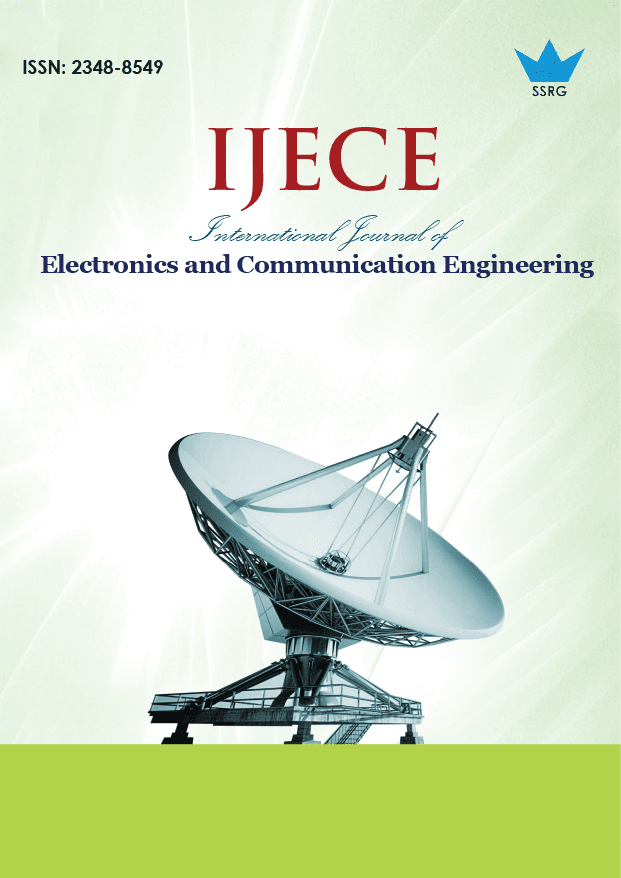SmartSecChain-SDN: A Blockchain-Integrated Intelligent Framework for Secure and Efficient Software-Defined Networks

| International Journal of Electronics and Communication Engineering |
| © 2025 by SSRG - IJECE Journal |
| Volume 12 Issue 10 |
| Year of Publication : 2025 |
| Authors : Azhar Hussain Mozumder, M. John Basha, Chayapathi A. R. |
How to Cite?
Azhar Hussain Mozumder, M. John Basha, Chayapathi A. R., "SmartSecChain-SDN: A Blockchain-Integrated Intelligent Framework for Secure and Efficient Software-Defined Networks," SSRG International Journal of Electronics and Communication Engineering, vol. 12, no. 10, pp. 212-231, 2025. Crossref, https://doi.org/10.14445/23488549/IJECE-V12I10P117
Abstract:
With more and more existing networks being transformed to Software-Defined Networking (SDN), they need to be more secure and demand smarter ways of traffic control. This work, SmartSecChain-SDN, is a platform that combines machine learning based intrusion detection, blockchain-based storage of logs, and application-awareness-based priority in SDN networks. To detect network intrusions in a real-time, precision and low-false positives setup, the framework utilizes the application of advanced machine learning algorithms, namely Random Forest, XGBoost, CatBoost, and CNN-BiLSTM. SmartSecChain-SDN is based on the Hyperledger Fabric, which is a permissioned blockchain technology, to provide secure, scalable, and privacy-preserving storage and, thus, guarantee that the Intrusion Detection System (IDS) records cannot be altered and can be analyzed comprehensively. The system also has Quality of Service (QoS) rules and traffic shaping based on applications, which enables prioritization of critical services, such as VoIP, video conferencing, and business applications, as well as de-prioritization of non-essential traffic, such as downloads and updates. Mininet can simulate real-time SDN scenarios because it is used to prototype whole architectures. It is also compatible with controllers OpenDaylight and Ryu. It has tested the framework using the InSDN dataset and proved that it can identify different kinds of cyberattacks and handle bandwidth allocation efficiently under circumstances of resource constraints. SmartSecChain-SDN comprehensively addresses SDN system protection, securing and enhancing. The proposed study offers an innovative, extensible way to improve cybersecurity, regulatory compliance, and the administration of next-generation programmable networks.
Keywords:
Blockchain, Intelligent framework, Intrusion Detection System, Secure and efficient Software-Defined Networks.
References:
[1] Josy Elsa Varghese, and Balachandra Muniyal, “An Efficient IDS Framework for DDoS Attacks in SDN Environment,” IEEE Access, vol. 9, pp. 69680-69699, 2021.
[CrossRef] [Google Scholar] [Publisher Link]
[2] Mohammad Rostami, and Salman Goli-Bidgoli, “An Overview of QoS-aware Load Balancing Techniques in SDN-based IoT Networks,” Journal of Cloud Computing, vol. 13, pp. 1-42, 2024.
[CrossRef] [Google Scholar] [Publisher Link]
[3] Wenjuan Li et al., “BlockCSDN: Towards Blockchain-Based Collaborative Intrusion Detection in Software Defined Networking,” IEICE Transactions on Information and Systems, vol. 105, no. 2, pp. 272-279, 2022.
[CrossRef] [Google Scholar] [Publisher Link]
[4] Samia Choueiri et al., “Scalable Heavy Hitter Detection: A DPDK-based Software Approach with P4 Integration,” 2024 IEEE Global Communications Conference, Cape Town, South Africa, pp. 1930-1935, 2024.
[CrossRef] [Google Scholar] [Publisher Link]
[5] Wei Min et al., “An SDN-Orchestrated Artificial Intelligence-Empowered Framework to Combat Intrusions in the Next Generation Cyber-Physical Systems,” Human-Centric Computing and Information Sciences, vol. 14, pp. 1-19, 2024.
[CrossRef] [Google Scholar] [Publisher Link]
[6] Sanjeev Kumar Dwivedi et al., “Blockchain‐Based Internet of Things and Industrial IoT: A Comprehensive Survey,” Security and Communication Networks, vol. 2021, no. 1, pp. 1-21, 2021.
[CrossRef] [Google Scholar] [Publisher Link]
[7] Sunil Kr. Singh et al., “Evolving Requirements and Application of SDN and IoT in the Context of Industry 4.0, Blockchain and Artificial Intelligence,” Software Defined Networks: Architecture and Applications, pp. 427-496, 2022.
[CrossRef] [Google Scholar] [Publisher Link]
[8] Lizeth Patricia Aguirre Sanchez, Yao Shen, and Minyi Guo, “DQS: A QoS-Driven Routing Optimization Approach in SDN using Deep Reinforcement Learning,” Journal of Parallel and Distributed Computing, vol. 188, 2024.
[CrossRef] [Google Scholar] [Publisher Link]
[9] Ahmed Al-Jawad et al., “An Innovative Reinforcement Learning-based Framework for Quality of Service Provisioning Over Multimedia-based SDN Environments,” IEEE Transactions on Broadcasting, vol. 67, no, 4, pp. 851-867, 2021.
[CrossRef] [Google Scholar] [Publisher Link]
[10] Piyush Kulshreshtha, and Amit Kumar Garg, “Traffic Optimization and Optimal Routing in 5G SDN Networks using Deep Learning,” Innovations in Electrical and Electronic Engineering, pp. 33-41, 2024.
[CrossRef] [Google Scholar] [Publisher Link]
[11] Abass Adamou Djergou, Yassine Maleh, and Soufyane Mounir, “Machine Learning Techniques for Intrusion Detection in SDN: A Survey,” Advances in Information, Communication and Cybersecurity, pp. 460-473, 2021.
[CrossRef] [Google Scholar] [Publisher Link]
[12] Kallol Krishna Karmakar et al., “A Trust-Aware Openflow Switching Framework for Software Defined Networks (SDN),” Computer Networks, vol. 237, pp. 1-15, 2023.
[CrossRef] [Google Scholar] [Publisher Link]
[13] Zaid Mustafa et al., “Intrusion Detection Systems for Software-Defined Networks: A Comprehensive Study on Machine Learning-Based Techniques,” Cluster Computing, vol. 27, pp. 9635-9661, 2024.
[CrossRef] [Google Scholar] [Publisher Link]
[14] Laila M. Halman, and Mohammed J.F. Alenazi, “MCAD: A Machine Learning Based Cyberattacks Detector in Software-Defined Networking (SDN) for Healthcare Systems,” IEEE Access, vol. 11, pp. 37052-37067, 2023.
[CrossRef] [Google Scholar] [Publisher Link]
[15] Wei Ren et al., “SILedgers: A Blockchain and ABE-based Access Control for Applications in SDN-IoT Networks,” IEEE Transactions on Network and Service Management, vol. 18, no. 4, pp. 4406-4419, 2021.
[CrossRef] [Google Scholar] [Publisher Link]
[16] A. Sasikumar et al., “Blockchain-Assisted Hierarchical Attribute-Based Encryption Scheme for Secure Information Sharing in Industrial Internet of Things,” IEEE Access, vol. 12, pp. 12586-12601, 2024.
[CrossRef] [Google Scholar] [Publisher Link]
[17] K.R. Raghunandan et al., “Enhancing Cloud Communication Security: A Blockchain-Powered Framework with Attribute-Aware Encryption,” Electronics, vol. 12, no. 18, pp. 1-15, 2023.
[CrossRef] [Google Scholar] [Publisher Link]
[18] Durbadal Chattaraj et al., “Designing Fine-Grained Access Control for Software-Defined Networks using Private Blockchain,” IEEE Internet of Things Journal, vol. 9, no. 2, pp. 1542-1559, 2022.
[CrossRef] [Google Scholar] [Publisher Link]
[19] Vandani Verma, and Chinmay, “Enhancing Privacy in VANET through Attribute-Based Encryption and Blockchain Integration: Uncovering the Benefits and Challenges,” International Conference on Cryptology & Network Security with Machine Learning, Singapore, pp. 277-293, 2024.
[CrossRef] [Google Scholar] [Publisher Link]
[20] Anas Ali, Mubashar Husain, and Peter Hans, “Federated Learning-Enhanced Blockchain Framework for Privacy-Preserving Intrusion Detection in Industrial IoT,” arXiv Preprints, pp. 1-6, 2025.
[CrossRef] [Google Scholar] [Publisher Link]
[21] Abdullah H. Alqahtani, “An Incremental Hybrid Adaptive Network-based IDS in Software Defined Networks to Detect Stealth Attacks,” arXiv Preprint, pp. 1-20, 2024.
[CrossRef] [Google Scholar] [Publisher Link]
[22] Saeid Jamshidi et al., “Evaluating Machine Learning-Driven Intrusion Detection Systems in IoT: Performance and Energy Consumption,” Computers & Industrial Engineering, vol. 204, pp. 1-21, 2025.
[CrossRef] [Google Scholar] [Publisher Link]
[23] Osama Mustafa, Khizer Ali, and Talha Naqash, “C-RADAR: A Centralized Deep Learning System for Intrusion Detection in Software Defined Networks,” 2023 International Conference on Communication, Computing and Digital Systems (C-CODE), Islamabad, Pakistan, pp. 1-6, 2023.
[CrossRef] [Google Scholar] [Publisher Link]
[24] Carlos Núñez-Gómez et al., “S-HIDRA: A Blockchain and SDN Domain-Based Architecture to Orchestrate Fog Computing Environments,” Computer Networks, vol. 221, pp. 1-12, 2023.
[CrossRef] [Google Scholar] [Publisher Link]
[25] Daniel Commey, Sena Hounsinou, and Garth V. Crosby, “Strategic Deployment of Honeypots in Blockchain-based IoT Systems,” 2024 IEEE 6th International Conference on AI Circuits and Systems (AICAS), Abu Dhabi, United Arab Emirates, pp. 134-138, 2024.
[CrossRef] [Google Scholar] [Publisher Link]
[26] Muhammad Faraz Hyder et al., “Countering Crossfire DDoS Attacks through Moving Target Defense in SDN Networks using OpenFlow Traffic Modification,” Transactions on Emerging Telecommunications Technologies, vol. 34, no. 12, 2023.
[CrossRef] [Google Scholar] [Publisher Link]
[27] Samira Kamali Poorazad, Chafika Benzaïd, and Tarik Taleb, “Blockchain and Deep Learning-Based IDS for Securing SDN-Enabled Industrial IoT Environments,” 2023 IEEE Global Communications Conference, Kuala Lumpur, pp. 2760-2765, 2023.
[CrossRef] [Google Scholar] [Publisher Link]
[28] Guntur Dharma Putra et al., “Decentralised Trustworthy Collaborative Intrusion Detection System for IoT,” 2021 IEEE International Conference on Blockchain (Blockchain), Melbourne, Australia, pp. 306-313, 2021.
[CrossRef] [Google Scholar] [Publisher Link]
[29] Mohanad Sarhan et al., “HBFL: A Hierarchical Blockchain-Based Federated Learning Framework for Collaborative IoT Intrusion Detection,” Computers and Electrical Engineering, vol. 103, pp. 1-18, 2022.
[CrossRef] [Google Scholar] [Publisher Link]
[30] Ouafae Benoudifa, Abderrahim Ait Wakrime, and Redouane Benaini, “Securing SDN Controller Placement with MuZero and Blockchain-Based Smart Contracts,” Journal of King Saud University Computer and Information Sciences, vol. 37, pp. 1-23, 2025.
[CrossRef] [Google Scholar] [Publisher Link]
[31] Patikiri Arachchige, and Don Shehan Nilmantha Wijesekara, “Intrusion Detection Using Blockchain in Software-Defined Networking: A Literature Review,” Journal of Engineering Science & Technology Review, vol. 18, no. 1, pp. 57-79, 2025. [CrossRef] [Google Scholar] [Publisher Link]
[32] Anass Sebbar, Othmane Cherqi, and Faysal Bensalah, Blockchain–SDN‐Based Secure Architecture for Multi‐Edge Computing in Industrial IoT, Blockchain Technology for the Engineering and Service Sectors, pp. 1-448, 2025.
[CrossRef] [Google Scholar] [Publisher Link]
[33] M. Arun et al., “Internet of Things and Deep Learning-Enhanced Monitoring for Energy Efficiency in Older Buildings,” Case Studies in Thermal Engineering, vol. 61, pp. 1-18, 2024.
[CrossRef] [Google Scholar] [Publisher Link]
[34] N. Krishnaraj et al., “Energy-Efficient Blockchain-Integrated IoT and AI Framework for Sustainable Urban Microclimate Management,” Sustainable Computing: Informatics and Systems, vol. 47, 2025.
[CrossRef] [Google Scholar] [Publisher Link]

 10.14445/23488549/IJECE-V12I10P117
10.14445/23488549/IJECE-V12I10P117